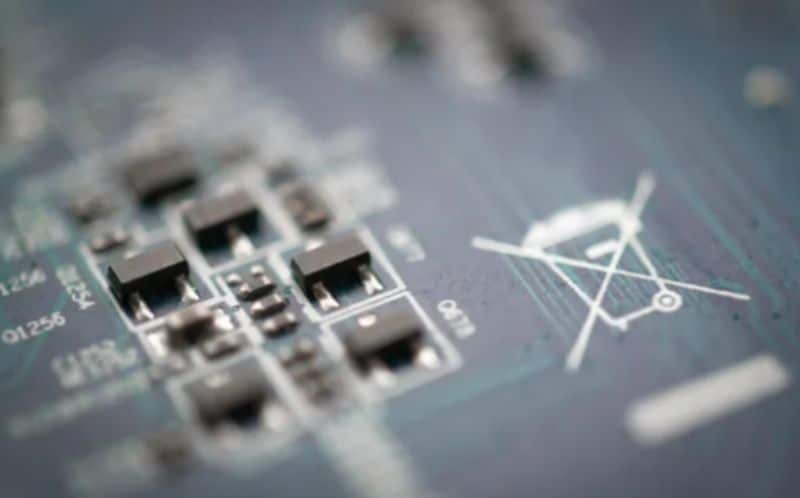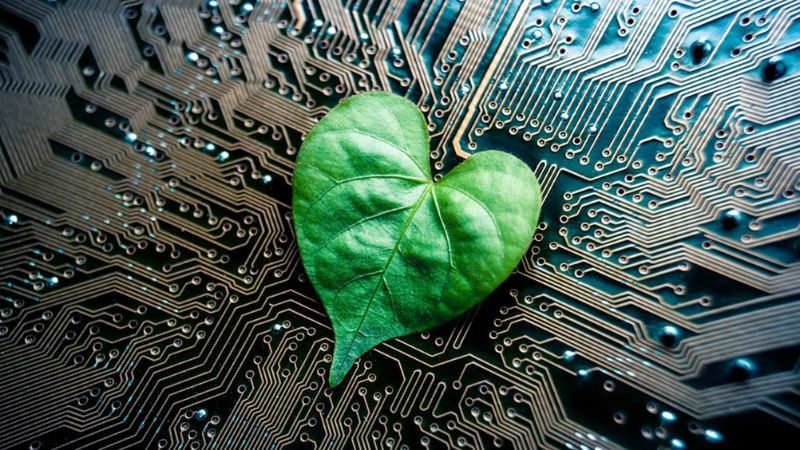
Sustainable engineering is a pivotal domain in today’s fast-evolving world, driven by the urgent need to preserve our environment, conserve resources, and reduce our carbon footprint. The fusion of technology, innovation, and environmental consciousness has given rise to sustainable engineering as a transformative force. In this blog post, we will delve into the importance of sustainable engineering and how it can make a lasting impact on our world.
Join us on this enlightening journey as we explore sustainable engineering principles, their role in various industries, and the way they intersect with PCB design. Let’s understand the key factors that engineers should focus on and unravel the profound connection between Sustainable Engineering and PLM (Product Lifecycle Management).
Stay with us as we shed light on how sustainability in engineering isn’t just an option; it’s a necessity for a brighter, more prosperous future.
Key Sustainable Engineering Principles
Sustainable engineering encompasses a set of fundamental principles that guide the creation of eco-friendly, efficient, and ethical solutions for modern challenges. These principles are the building blocks of sustainable engineering, shaping the way engineers approach problem-solving and innovation.
Environmental Stewardship
Sustainable engineering prioritizes the well-being of the planet. Engineers strive to create solutions that minimize environmental impact, reduce pollution, and support the conservation of natural resources. This principle focuses on designing systems that exist in harmony with nature, rather than exploiting it.
Economic Viability
For sustainability to be successful, it must also be economically viable. Engineers must consider the long-term financial impact of their projects, ensuring that sustainable solutions are cost-effective over their lifespan. This principle encourages innovation that delivers value to both the environment and the bottom line.
Social Responsibility
Sustainable engineering goes beyond environmental and economic concerns. It also addresses the social aspects of sustainability, aiming to create projects that improve the quality of life for communities. Engineers take into account issues like social equity, health, and cultural preservation to ensure their work benefits everyone.
Innovation and Efficiency
Innovation is at the core of sustainable engineering. Engineers are encouraged to seek out inventive solutions that maximize efficiency and reduce waste. These innovations can range from new technologies and materials to more efficient processes that reduce resource consumption.
Life-Cycle Thinking
Sustainability isn’t just about the end product; it’s about the entire life cycle of a system or product. Engineers adopt a holistic approach, considering the environmental and social impact of their work at every stage, from design and manufacturing to use and disposal.
Sustainable Engineering and PCB Design
Sustainable engineering extends its influence to various fields, and one area where it plays a significant role is in Printed Circuit Board (PCB) design. PCBs are integral components of most electronic devices, and incorporating sustainable practices into their design and manufacturing is crucial for reducing the environmental impact of electronics.
Energy Efficiency
Incorporating energy-efficient design principles into PCBs can lead to reduced power consumption, thereby decreasing the environmental footprint of electronic devices. Engineers focus on optimizing the layout of components, reducing unnecessary power losses, and ensuring that devices enter low-power states when not in use.
Materials Selection
The choice of materials in PCB design can have a substantial impact on sustainability. Engineers are increasingly using eco-friendly materials that are recyclable and have lower environmental costs in their production. Sustainable PCB design also emphasizes the use of lead-free and halogen-free materials, reducing the hazardous substances in electronic devices.
Miniaturization and Size Reduction
Sustainable engineering encourages the miniaturization of electronic components, leading to smaller PCBs and less material usage. Smaller PCBs also enable devices to be more compact and lightweight, reducing energy consumption during transportation and use.
Extended Product Lifespan
One way to ensure sustainability in PCB design is to create products that have a longer lifespan. This means designing PCBs that are durable, reliable, and repairable. Products that last longer reduce electronic waste and the need for frequent replacements.
Recycling and Disposal Considerations
Sustainable engineering doesn’t end with the manufacturing of PCBs; it also addresses their end-of-life phase. Engineers focus on designing PCBs in a way that facilitates easy disassembly and recycling. They consider how to manage electronic waste and promote responsible disposal practices.
Collaborative Product Lifecycle Management (PLM)
Sustainable engineering and PCB design can benefit significantly from the integration of Product Lifecycle Management (PLM) systems. PLM systems allow engineers to track and manage every aspect of a product’s lifecycle, from concept to disposal. This helps in optimizing product sustainability, managing resources efficiently, and ensuring the environmental impact is minimal.
Incorporating these sustainable engineering principles into PCB design is not only environmentally responsible but also economically advantageous. It aligns with the growing demand for eco-friendly products and caters to consumers who prioritize sustainability.
What Key Sustainable Engineering Principles Should Engineers Focus On?
Sustainable engineering principles provide a roadmap for engineers to create innovative, environmentally friendly solutions. When applied effectively, they can guide engineers in reducing environmental impact and ensuring a more sustainable future. Here are some key principles that engineers should focus on:
Life Cycle Assessment (LCA)
Sustainable engineering begins with understanding the environmental impact of a product throughout its entire life cycle. Engineers perform LCAs to assess the carbon footprint, resource usage, and environmental consequences associated with the creation, usage, and disposal of a product. By conducting a thorough LCA, engineers can identify areas where improvements can be made.
Materials Selection
Selecting the right materials is crucial. Engineers should consider the use of renewable, recycled, and low-impact materials in product design. This decision impacts a product’s environmental impact, from the extraction of raw materials to manufacturing, transportation, and disposal.
Energy Efficiency
Energy efficiency is a key focus area. Engineers aim to reduce energy consumption during both the manufacturing and operational phases of a product. Energy-efficient designs lead to lower electricity bills, decreased greenhouse gas emissions, and less strain on resources.
Durability and Longevity
Creating products with extended lifespans is essential for sustainability. Engineers should design products that withstand wear and tear, are easy to maintain, and can be repaired if necessary. This approach reduces waste and conserves resources.
Waste Reduction
Engineers must minimize waste in the production process. This involves optimizing manufacturing methods, reducing excess material usage, and finding innovative ways to reuse waste products. Less waste translates to reduced environmental impact.
Collaboration and Stakeholder Engagement
Sustainable engineering often requires collaboration with various stakeholders. Engineers work with suppliers, manufacturers, policymakers, and consumers to align goals, standards, and regulations. This engagement is vital for creating sustainable solutions that benefit society at large.
Regulatory Compliance and Ethical Practices
Adhering to environmental regulations and ethical practices is non-negotiable. Engineers must ensure that their projects align with relevant environmental laws and follow ethical standards. This includes transparent reporting and responsible sourcing of materials.
Renewable and Alternative Energy Sources
Engineers should consider the use of renewable energy sources in product design. Integrating solar, wind, or other sustainable energy technologies into products can reduce their carbon footprint and reliance on non-renewable energy sources.
By focusing on these sustainable engineering principles, engineers can make a significant impact on the environment, contribute to a greener future, and respond to the growing demand for eco-friendly products.
Sustainable Engineering and PLM (Product Lifecycle Management)
One of the key tools that sustainable engineers use to implement sustainable engineering principles is Product Lifecycle Management (PLM). PLM is a systematic approach to managing the entire lifecycle of a product, from initial design and production to service and disposal.
Integration of Sustainable Design:
PLM software facilitates the integration of sustainable design principles from the initial stages of product development. Engineers can use PLM tools to assess the environmental impact of design choices and make informed decisions to reduce that impact.
Collaboration and Communication:
PLM systems enable interdisciplinary teams to collaborate effectively throughout the product’s lifecycle. This is crucial for sustainability, as it allows experts from various fields to contribute their knowledge and insights to ensure sustainability goals are met.
Data Management:
Managing a vast amount of data associated with product development and management is a complex task. PLM tools help organize and manage this data efficiently, allowing engineers to track sustainability-related metrics and ensure compliance with sustainability standards.
Supply Chain Sustainability:
Sustainable engineering often extends to the entire supply chain. PLM can help track and improve the sustainability of the supply chain by assessing the environmental and social impacts of suppliers and materials.
Regulatory Compliance:
Sustainability-related regulations are constantly evolving. PLM systems can assist in staying up-to-date with changing regulations and ensuring product designs and processes are compliant.
Life cycle Assessment:
PLM tools include capabilities for conducting lifecycle assessments of products, helping engineers understand the environmental impacts and sustainability potential of different design choices.
Continuous Improvement:
Sustainable engineering is an ongoing process. PLM can support continuous improvement by providing insights into how sustainability performance can be enhanced over time.
Cost Efficiency:
Sustainable engineering may also lead to cost savings in the long run. PLM can help manage product costs while maintaining sustainability goals.
Market Competitiveness:
Products that are developed and marketed with sustainability in mind are often more competitive in today’s environmentally conscious market. PLM can facilitate the design and management of such products.
By integrating sustainable engineering principles into PLM practices, engineers can effectively manage sustainability aspects throughout the product lifecycle. This results in products that are not only environmentally friendly but also competitive in the market and socially responsible.
Challenges in Sustainable Engineering
While sustainable engineering offers numerous benefits, it is not without its challenges. In this section, we’ll explore some of the key challenges that engineers face when striving to implement sustainable engineering principles.
Complexity of Sustainability Metrics:
Measuring sustainability is a complex task. There is no one-size-fits-all metric for assessing environmental, social, and economic impacts. Engineers often struggle to define appropriate metrics and gather accurate data.
Balancing Environmental, Social, and Economic Goals:
Sustainable engineering aims to balance environmental protection, social responsibility, and economic viability. Engineers must carefully navigate these often conflicting goals to design products and systems that meet all three criteria.
Resistance to Change:
Implementing sustainability often requires significant changes in processes, materials, and designs. Resistance to these changes, both within organizations and among customers, can be a barrier to progress.
Regulatory Hurdles:
Navigating the complex landscape of environmental regulations can be challenging. Engineers must ensure their designs meet existing regulations while staying updated on changes and additions to laws.
Limited Resources:
Implementing sustainability initiatives may require investments in new technologies, materials, or training. Engineers often face budget constraints and resource limitations.
Information Gaps:
In some cases, engineers may lack access to comprehensive data regarding the environmental and social impacts of materials or processes, making informed decisions more difficult.
Global Supply Chains:
Products often rely on components and materials from around the world, creating complexity in assessing and managing the entire supply chain’s sustainability.
Uncertain Market Demand:
Sustainability trends and market demand can fluctuate, making it challenging to predict the long-term viability of sustainable product lines.
Technology Integration:
Incorporating new sustainability-focused technologies into existing systems can be difficult and costly.
Educational Gaps:
Training engineers and other professionals in sustainable engineering practices is crucial but may be lacking in traditional educational programs.
Addressing these challenges requires a multifaceted approach involving research, collaboration, innovation, and a commitment to sustainability principles. While overcoming these obstacles can be daunting, the benefits of sustainable engineering, including reduced environmental impact and enhanced competitiveness, make it a worthwhile endeavor.
Conclusion: A Sustainable Path Forward
In a world grappling with pressing environmental concerns and an urgent need for responsible resource management, sustainable engineering shines as a guiding light towards a better future. By prioritizing environmental stewardship, economic resilience, and social responsibility, sustainable engineering paves the way for a more promising and harmonious world.
As we look ahead, let’s continue embracing sustainability in engineering and integrate it into our daily practices. With sustainability as our compass, we can navigate towards a future that is environmentally responsible, economically robust, and socially equitable. The decision is ours to make, and the time to act is now.



